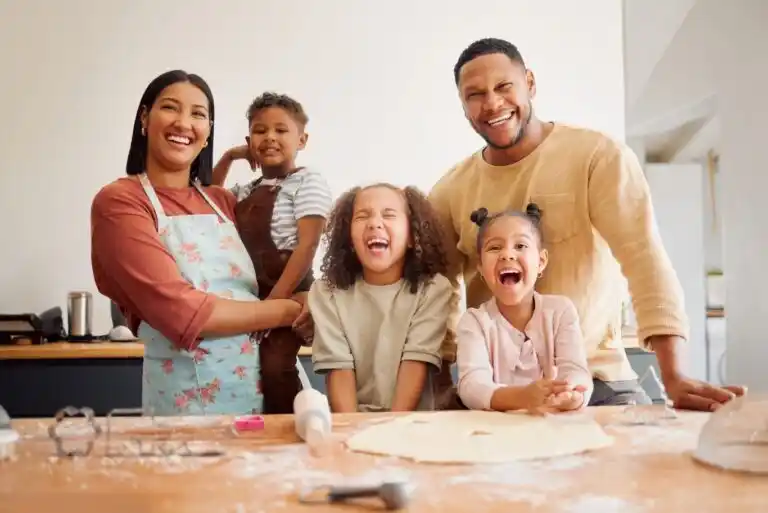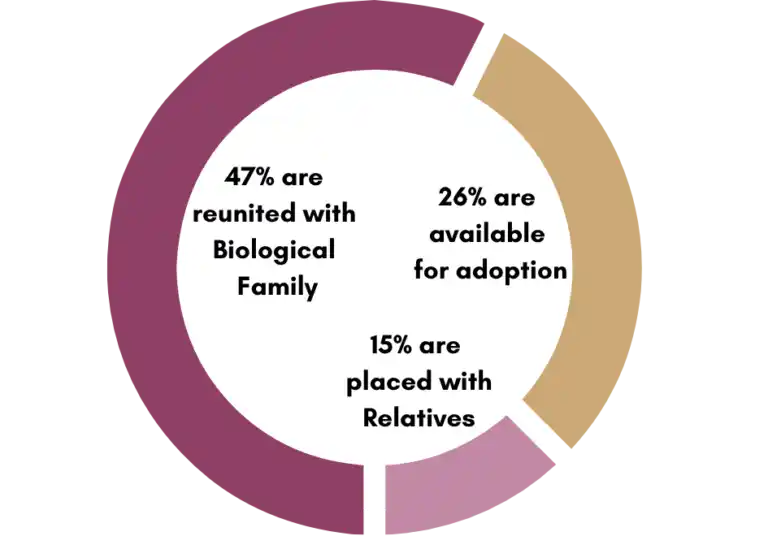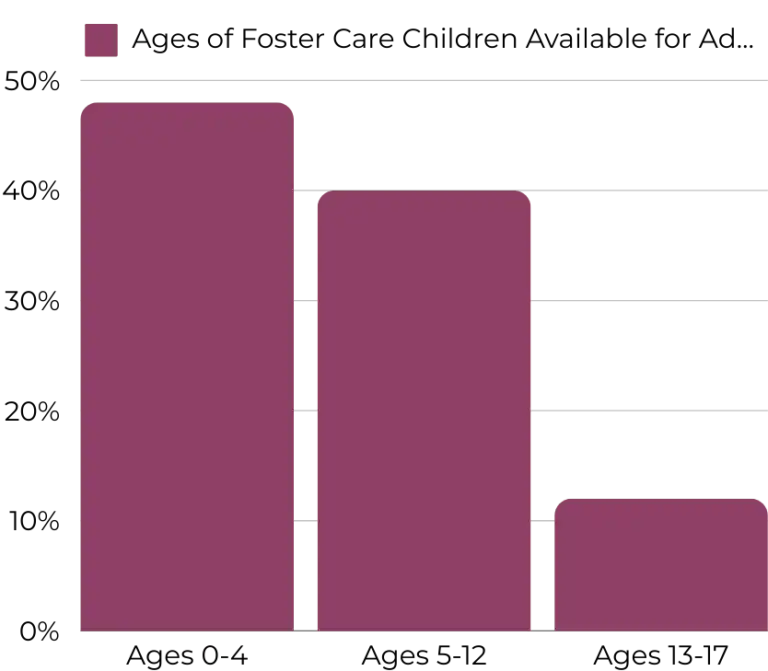
Foster Care: This is intended as a temporary living situation for children whose parents cannot care for them and whose need for care has come to the attention of Child Protective Services. Over half the children in this temporary living situation will be reunited with their families. When this is not possible, and extended family members are unable to adopt, children will become available for adoption by families outside their kinship group. faith leaders
Certified Foster Families step in to provide safety and stability when birth families are unable to do so. These families can go on to adopt if the child becomes available for adoption.

The Reunification Principle
Foster Care Systems focus on reunifiying children with their biological family.

Reunification with Biology Family
Foster Cares primary goal is to reunify children with their biological parents.

Placement with Known Relatives
If the first step is not possible then placement with a biological relative is pursued.

Placement with Family Friends
If placement with relatives is not possible, then family friends are considered.

Eligible for adoption by non-relative
Adoption by non-relatives is only considered after the three prior possibilities have been exhausted.
Of the nearly 200,000 children in Foster Care each Year:

Foster Care by the Numbers

Foster Care adoptions is a subset of domestic adoptions coming from the Foster Care system.
“In 2022, a total of 53,579 children were adopted from foster care in the U.S.
This decreased 0.98% from the previous year. This trend was observed in 28 states and D.C., while adoption numbers increased in 22 states.” -NCFA Adoption by the Numbers


2
years is the average amount of years a child stays in the foster care system before being adopted.
5
Percent of children remain in foster care for five years or more.
6
Years old is the average age of a child available for adoption through Foster Care.
The Pros of Foster Care as a way to Adopt

Providing a Stable Home
Adopting through foster care gives a child a permanent, safe environment, supporting their growth and emotional well-being.

Affordable or No-Cost Adoption
This makes adoption accessible to more families. Significant subsidies are available to help with the child’s needs in about 94% of adoptions.

Subsidies
Significant subsidies are available to help with the child’s needs in about 94% of adoptions.
The Cons of Foster Care as a way to Adopt

Emotional and Behavioral Challenges
Children in foster care may have experienced trauma, which can affect their emotional and behavioral development. Supportive training and resources are available to help.

The Foster Care System
While many children in foster care are eligible for adoption, some may face long wait times as legal or family matters are resolved.

Complex Family Dynamics
Adoption through foster care often include navigating relationships with birth family members and extended family complexities.
There is an urgent need nationwide. Your State Foster Care System will prepare you to become a Foster Family.
Find Foster Care Details for Your State in 3 Easy Steps.
1. In your browser: Enter the name of your state followed by the words “Foster Care”
2. Skip over the Sponsored Links. They won’t take you to your state’s official page.
3. The first un-sponsored link will most likely be your official state’s foster care information,


